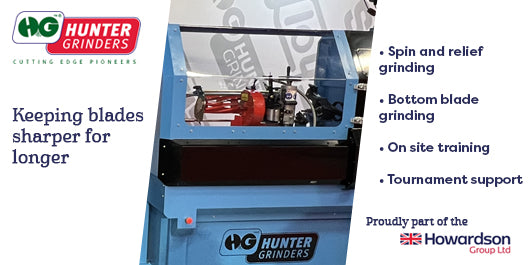Out with the outfield in with the new
Out with the outfield, in with the new
By Dave Saltman
Excavating and removing approximately 20,000 tonnes of soil may not sound a lot in a quarry; but from Lords Cricket Ground in Central London it poses a logistical nightmare.
At Lords I met the Project Manager for Mallinsons, Richard Aspinwall, who explained the schedule of works.
"On September 2nd, the first hallowed Test turf was lifted off in one square yard and one square foot pieces and sold off to members of the public. By the 12th, most of the turf had been sold and the real excavation began.
Large 30 tonne excavators were filling up to sixty lorries a day with soil, a sensitive issue that had been expertly pre-planned with all stadium parties, local residents, Westminster Council and the police.

A metal track way was installed, covering a third of the nursery outfield and running through to the main ground and around either side of the square. The track allowing access and exit for the large eight wheel lorries to be loaded by the excavators.


Once sufficient an area had been excavated to the formation depth of twenty inches (500mm), drainage pipes were installed and the aggregate, the first layer in the process of the outfield re-construction was brought in and tipped in the hole. The lorries began stone delivery on the 23rd of September. The aggregate was 10mm pea shingle and this was levelled over a Terram semi-permeable membrane to stop contamination of the gravel carpet with the heavy London Clay.

As work continued through October spoil was being taken away, while gravel, grit, sand and the root zone were brought in. Sometimes as much as a thousand tonnes of material were being imported each day with similar amounts of soil going out.
The gravel carpet was graded to a depth of six inches (150mm); a blinding layer of grit followed this. The grit layer acts as a barrier to
On top of the two-inch (50mm) grit layer the lower root zone of specified drainage sand was spread. This layer is approximately five inches (125mm) thick.
The upper root zone was a sand soil mix and was levelled to a depth of nearly six inches (140mm).

By the 26th October the original outfield was gone and work was well underway with the new, layered profile. The only two major problems encountered to date have been the movement of lorries within specified working times and the difficulties arising from working with London Clay.
With moisture in the clay and heavy machines working on top, it became quite unstable in places and started to move like a giant

Richard is very pleased with the overall job to date, and anticipates that final levels and consolidation will be finished by the end of the third week in November. He hopes that Inturf will then be ready to start laying specially grown fibre reinforced big roll turf on the 25th. By Christmas he hopes that all will be complete and the green oasis will have been restored to its original size and splendour.



